There are three common methods for coloring concrete countertops. One way is by using integral pigments. Another way is to acid stain the concrete, and the third way is to use a dye. This article explains integral pigments.
Integral Pigments
Integral pigments are a very common method for coloring concrete. Pigments are very finely ground particles of inert colored material that are mixed into the concrete (usually during mixing, or sometimes during trowelling).
Integral pigments can be powders or liquids. They can be natural minerals, manufactured metal oxides or synthetic materials. Integral pigments offer the widest range of color options that span the entire spectrum. Pigments can be pure white, deep black, red, bright yellow, blue, purple, green, brown, orange, etc. Pigments can be blended into a nearly infinite range of shades and colors, offering virtually the same color range as the paint industry.
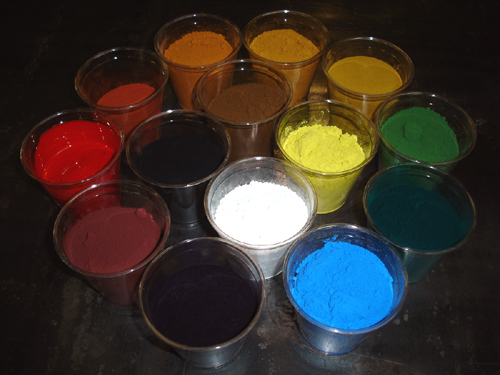
Integral pigments provide versatility and dependability. The strength of integral pigments is their huge color range and their consistency. Pigments are the most consistent and highly controlled ingredient in concrete. As long as careful batching, mixing and curing procedures are followed (paying special attention to controlling the mix water), the resulting color consistency can be very high. With integral pigments, it’s easy to achieve the same color and the same look over and over again, as long as the your concrete countertop craftsman is meticulous.
Integral pigments get mixed into the concrete, so the entire body of the concrete is colored (although there are methods that don’t require coloring all of the concrete in a slab). This means that significant quantities of pigment are required, and this leads to perhaps integral pigments’ downside. Some pigments are more expensive and harder to find. Pigment prices can range from $2/lb to over $60/lb, and while many of the standard iron oxide colors are widely available from a number of manufacturers, some of the more exotic colors are available from only a few small distributors. A concrete countertop craftman may charge more for concrete colored with some of the more exotic colors.
Here are a few pictures of concrete colors achieved with integral pigments.
Integral colors can be subtle:
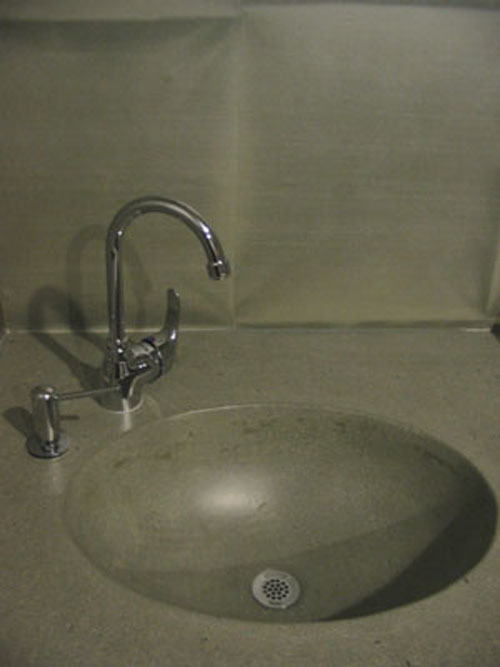
Soft sage green countertop
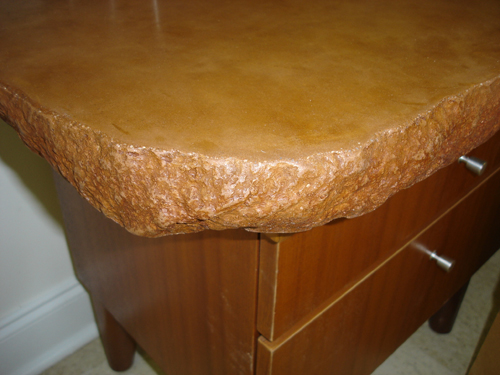
Penny colored countertop with rustic edge.
Or bright:
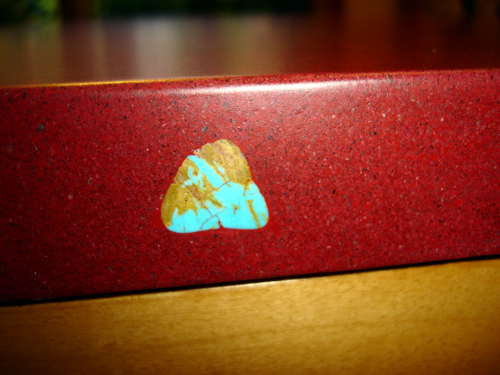
Piece of turquiose embedded in edge of bright red countertop
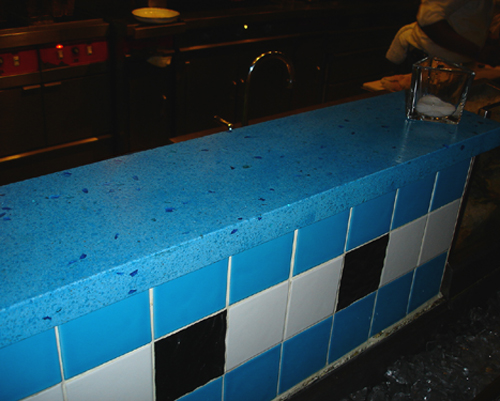
Aqua blue oyster bar with blue glass
Or combined with other effects to create different looks. The following two countertops use a bit of black pigment to create a dark gray concrete, but then use stone and glass in different ways to create very different looks.
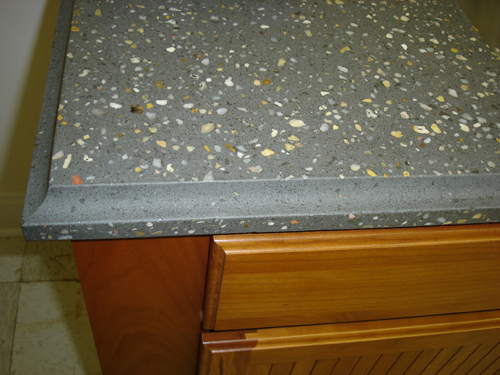
Traditional look achieved with gray concrete and cream/tan stones and traditional edge.
We sell high quality concrete countertop pigments from Buddy Rhodes Concrete Products. Buddy Rhodes pigments are specifically formulated for concrete, powerful, consistent, reliable, and conveniently packaged in useful sizes for concrete countertop makers.
Read next: Part 2: Acid Stains
